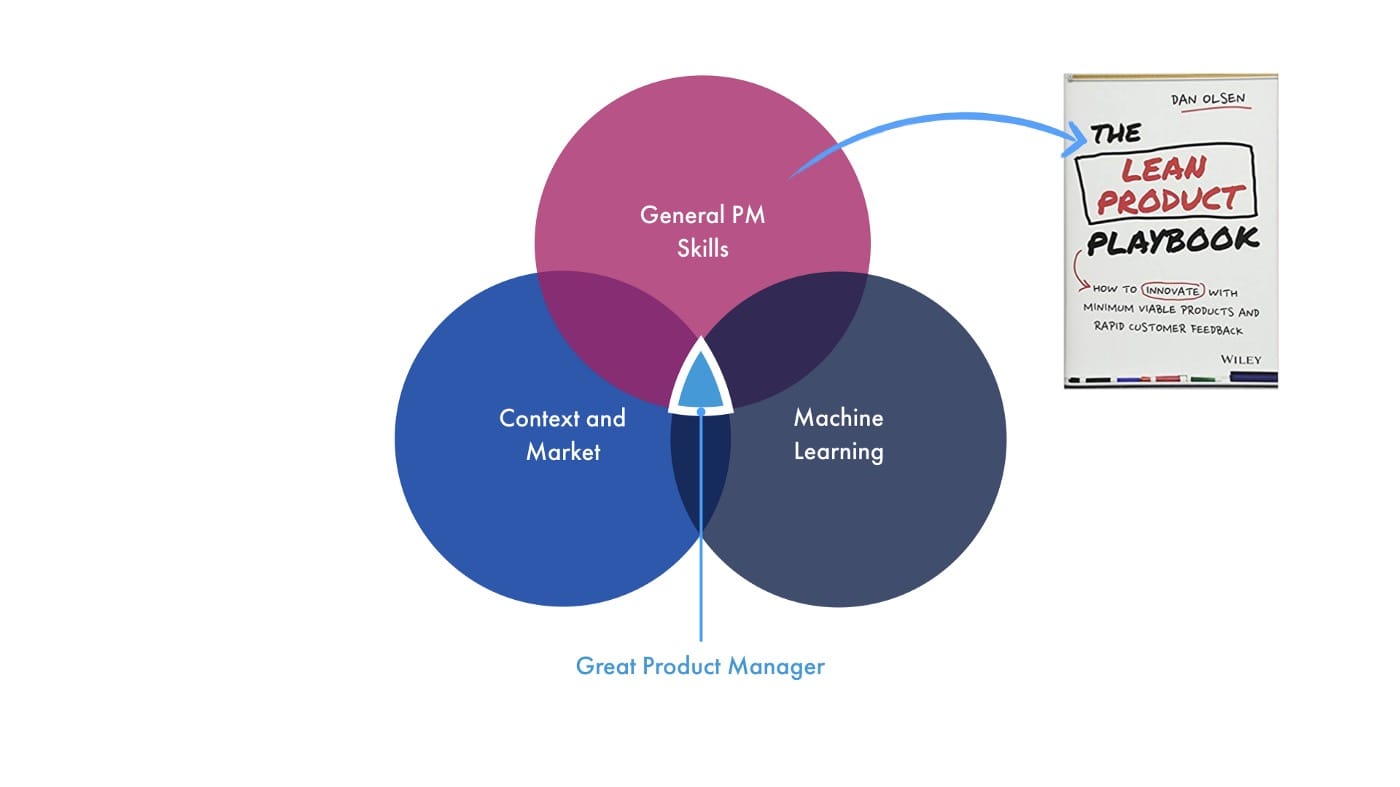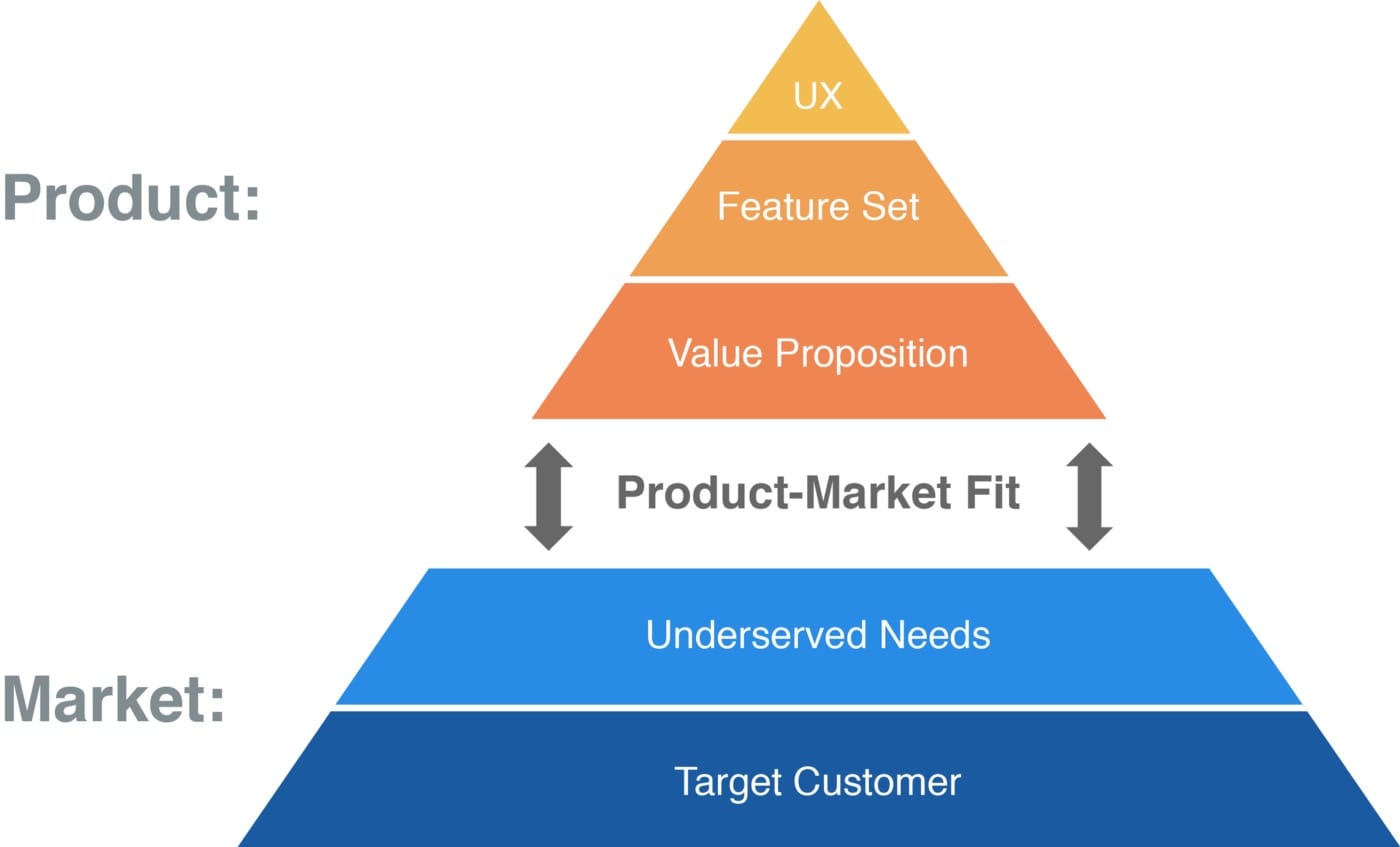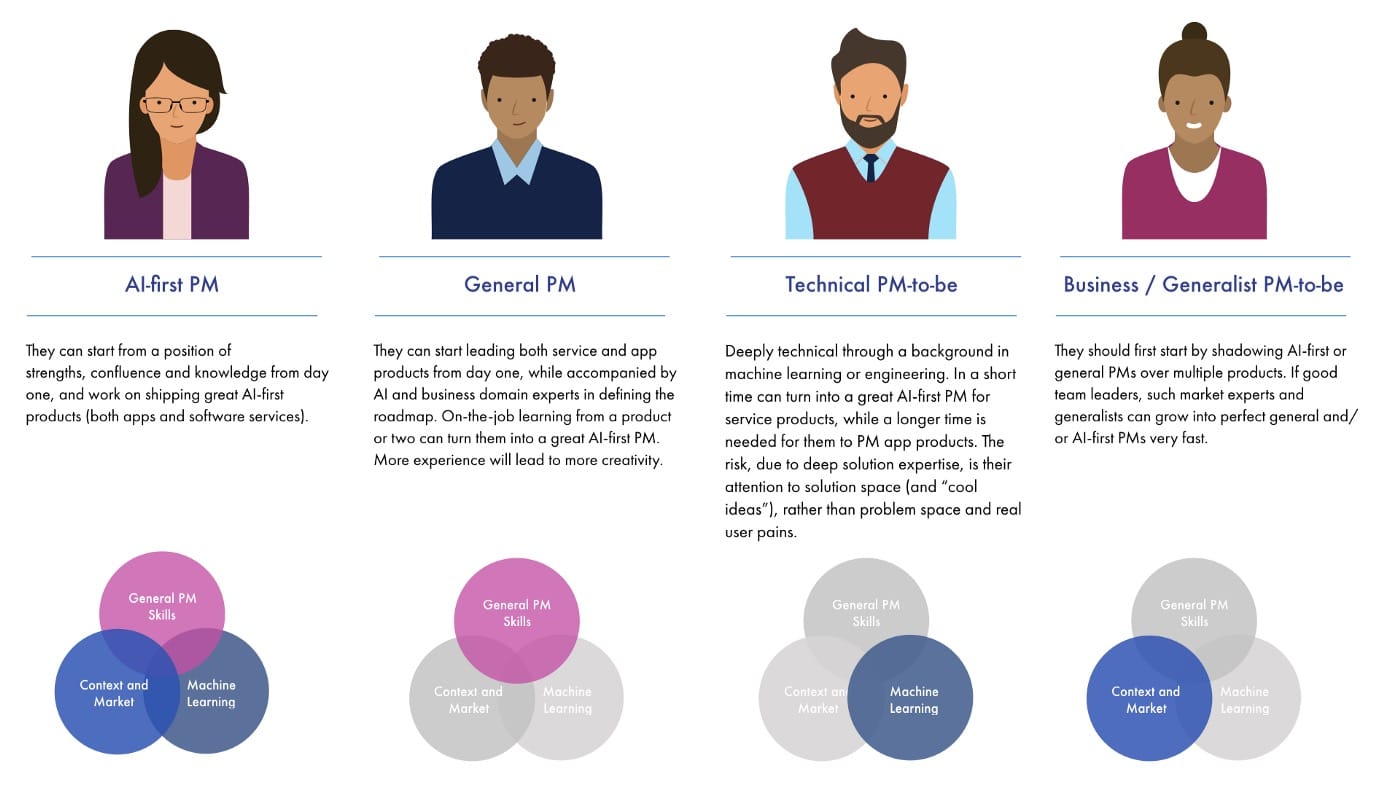
Recently accepted by Red HoffmanMaster of scaleInterviewMarissa Mayer shared her reasons for creating the Google Recruitment and Training Product Manager (PM) program. According to her, as Google becomes more complex, they need more talent to flexibly cover any aspect of the company's rapidly growing product range. However, hiring a qualified product manager is much more difficult than Mayer expected. She thought: "I can hire new people outside the school and train them to become Google's excellent product managers, rather than hiring people you like, they are more experienced and more advanced." Google's APM (Assistant Product Management) program is just one example of how it establishes a key role for PM in Internet companies and digital businesses.
“A great vice president of products is the brain of an engineer, the core of the designer and the tongue of the diplomat”, Deep Nishar
Product managers play an important role in the success of a product, even if it is not the most important role. They enable engineering, design, strategy, sales, marketing, operations and other professions to work together with minimal friction. They have (or at least, greatly influence) decisions about building content and how it is built. Ben HorowitzFamous articleTo sum up this point: "A good product manager understands the market, products... and competition very well, and operates on the basis of strong knowledge and confidence... An excellent product manager knows the background (company, competition),...) , They are responsible for designing and executing the winning plan (without any excuses)."
On the other hand, the software world has seen continuous changes and transformations. From the web and mobile, to the newest and most important one: AI (or more specific machine learning). In addition, it has entered an industry that has never been considered to be eaten by "software." For example, in the medical and financial fields, digital transformations (including but not limited to the introduction of AI) are occurring at an extremely fast pace and scale. New unicorns are constantly emerging, such asOscar.Babylon Health.Robin Hood和Revolut, To name a few. Large companies are hiring digital and artificial intelligence leaders to drive their ambitious transformation plans. This constant change in the scope and field of software products, coupled with the importance of AI in modern software, means that becoming an excellent product manager is a fast-developing goal. Someone who was considered a great PM in one industry a few years ago may not even fit the interview in another industry – or even the same industry – today.
"Software is eating the world, but AI will eat software," Jensen Huang (CEO of Nvidia)

Suppose existing companies and start-ups with digital transformation come to the site with new digital products,Artificial intelligence priority designAs the key to making their products and services future-oriented, I think we need to hire the first PM or excellent product manager for a qualified AI-AI initiative. As a result, these verticals may face challenges similar to those faced by Google: qualified PM talent for emerging products and issues is scarce and may require programs like APM to shape the talent they need. Given all of this, I am happy to see the development of product managers. Below I outline the key skill sets and practical talent strategies required to become a good product manager in the AI world.

Basic knowledge: skills that the general manager must have
Internet software over the past few decades has taught us a lot of effective ways to build and distribute stable software, fast decision cycles, and the focus of various talent categories in modern software teams. More importantly, from a strategic point of view, we now know that the main reason for product failure is that they cannot meet customer needs in a better way than other alternatives: lack of product market fit. The most basic skills of product managers should enable them to establish product market fits and solve user problems.
If you are developing quality products, Dan OlsenLean product manualIt is a must read. This book provides an overview of the skills, such as:
- Understand customers
- Problem space and solution space thinking
- Decide on MVP, iteration and pivoting
- Analysis for optimizing products
These are just some of the skills PM needs in the lean product process and continue to ensure product marketability and commercial success. People who live in this book (or have experienced this book at work as a PM) will certainly have excellent general PM skills (I will refer to this as a general PM in this article).

Context and market power
Understanding the market is essential for establishing product market fit. In many consumer applications, this knowledge can be (at least, partly) through personal experience, friends and family, quick online tests, etc. irrelevant. But in more complex industries such as commercial insurance, medicine, and asset management, this will require a level of understanding and meaningful interaction with domain experts, usually from the industry within a reasonable time period. In addition, in many vertical industries undergoing digital transformation, the role of PM is to rethink and reimagine the business – a major task that requires a comprehensive understanding of the value chain and the primary principles of the corresponding business.
For example, in insurance, this requires a certain level of knowledge, including underwriting, pricing, claims, risk management, asset management, and various other internal operations of insurance companies.In addition, there are huge partnerships and competitive ecosystems (reinsurers, insurance companies, brokers, regulators, etc.), which increase the complexity of decision-making.In the field of healthcare, there are huge differences between countries in the health ecosystem: different forms of relationships between payers, providers and regulators; many diseases, treatments and technical terms; medical ethics and sensitive personal data; rapid development Scientific literature – this list goes on.
An in-depth understanding of the industry/market can help PM go beyond basic user requests and introduce external capabilities.
In-depth market knowledge and industry expertise help to establish the credibility of PM when communicating with various stakeholders and users. In addition, it can help PM transfer traditional wisdom from their general PM skills to the current situation and market. For example, imagine that the digital/product department of a large asset management company is building a product that flags credit risk events through news-driven signals to a $1000 billion fixed income portfolio. The number of users and key decision makers here will be very small (maybe less than 5 and 50, respectively). Here, an embarrassing MVP – possibly due to avoidable AI errors when looking for the right signal and accurate prediction of credit spreads – can have a huge negative financial impact on the portfolio and can cause the product team to lose credibility.
This dynamic violates the traditional wisdom of the consumer Internet world (sometimes there are billions of addressable users), and if you are not embarrassed about the first version of the product, then your launch is too late. In this case, users are more like venture capitalists, and their feedback can lead to decisions/no decisions about product funding. In addition, product teams cannot learn through continuous testingBasic knowledge. Balancing traditional wisdom with the reality of the Internet business and specific industries is a subtle art, and PM with contextual knowledge can reduce the risk of failure of the entire product.
"If the first version of your product doesn't make you feel embarrassed, then your launch is too late," Reid Hoffman
A deep understanding of the market can help PM go beyond basic user request/feedback and introduce out-of-the-box features. In 2006, Daniel Ek of the music streaming service Spotify had to compete with music piracy – almost like a free streaming service competing with paid streaming services. His deep understanding of the market makes the speed of streaming media (through his understanding of auditory neuroscience) and the breadth of the music library (through his understanding of the market and users) clearly the keys to winning potential users. Daniel said: "I read in this book that the human brain needs about 200 milliseconds to perceive anything. I told the engineering team that we have to reduce it to 200 milliseconds." He hopes that the gap between the user's hitting the game and the music hitting the user's eardrum is hard to detect, based on a deep understanding of how the product interacts with the user. He also wants users to feel that they have all the music in the world on their hard drives. He knew that by creating this feeling, Spotify would build something better than pirated copies. At that time, there were two crazy ideas that led to Spotify's success today, both of which originated from deep market and background knowledge.
Machine learning know-how
Over the past decade, we have seen the massive adoption of software in all aspects of our lives: from search, shopping and travel to health, finance and more.More softwarePositive feedback loop>>More convenience + more data >>Better AI >>More mass adoption/funding, repeatThere seems to be enough fuel to help AI-first software reach almost every angle of our lives. This is why a good PM inevitably understands how the advantages of the drivers or algorithms within the software affect the success of the user experience.
Imagine if you called Alexa and it worked only 60% of the time. Are you satisfied with the overall product and continue to use it? How accurate should a conversational AI agent be for customers to see the experience as something worth returning to? For example, how will this answer change if we move from banking to healthcare? Should hospitals use an emergency readmission prediction model that is 90% accurate so that people can prioritize early inspections to reduce the risk of readmission? How to measure accuracy? it isROCThe area under the curve, or precision/recall, or something else?These are just a few examples of the problems that PM should have when defining the product roadmap and evaluating the goodness of the model for user problems.Of course, this does not mean that AI-first PM must have a degree in machine learning; it refers to the mapping of UX KPIs to机器 学习KPI's ability.
To further tell the story, AI is the starting point for the design process when building AI-first products. Instead of adding AI functionality to the pre-AI product (SometimesKnown as "AI inside" product), it is about creating a new AI-centric experience, without artificial intelligence, there is no meaning. The emergence of these functions will have an impact on the use of agile frameworks. Most PMs are familiar with and advocate product delivery (according to the traditional skills of ordinary PMs). Unlike previous AI products in recent decades – it has many small features that can be delivered through a series of multi-week sprints – AI-first products usually have a small number of deep features, and each product requires months, sometimes even years of research and development . In addition, the success of achieving these features often has uncertainties associated with them. For example, can a computer predict the time of Alzheimer's disease with a 99% C statistic? Different approaches are needed when defining roadmaps and functional milestones.
How to develop an ideal product management plan
When recruiting AI-first PM, companies outside the technology sector face three main challenges:
- As mentioned above, the outstanding AI-first PMs in the market are scarce
- PM lacks proper internal training and development plans
- The definition of PM career trajectory is not clear
In general, whenSmall scaleWhen hiring, if the methods they design only employ AI-first PM or ordinary PM, then these companies will have much less demand for formal PM-specific talent plans; of course, for the latter, they must have a strong artificial intelligence and market Experts work closely with PMs to help them develop into excellent AI-first PMs.
“When you can't find the people you need, you have to make them,” Marissa Mayer
Due to the scarcity of AI-first and general PM (the two recruitment options mentioned above), it is easier to handle after recruitment and it is difficult to succeed. That's why when artificial intelligence is first digitally transformed and product development, companies must be willing to hire a wider range of profiles to meet the needs of PM talent more quickly. Given that a good AI CEO is likely to be a fairly advanced individual, the more inclusive approach to recruiting PM will create an organic path for the primary PM talents of the various core skill groups to grow into an excellent AI-first PM. Overview. This will only be a good thing.

Regardless of the level of qualifications of the recruiting company as a product manager, product management primarily needs to be studied at work. This is why these organizations need to establish mechanisms to support this learning. Excellent PM will rise through formal and informal training, frequent shifts between products and businesses, and exposure to new talents and trends shaping the industry. A well-designed product management program will be the key to hiring, nurturing and retaining excellent PM and providing them with a fulfilling professional experience.
This article is transferred from medium,Original address



Comments